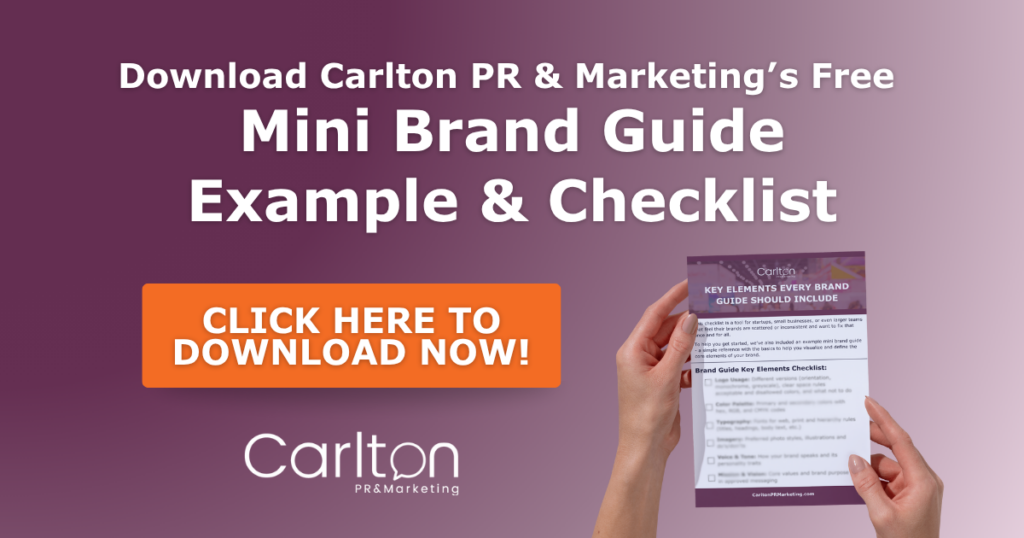If you have done any research into marketing, you may have heard of the 7-touch point rule. This is the idea that it takes at least seven interactions to grab someone’s attention enough to make them convert or purchase your offering.
But how do you make those touches count? The answer is branding.
A consistent brand goes far beyond design. It encompasses your messaging, core values, target audience personas, and more. Unfortunately, many businesses jump into marketing without this crucial foundation in place. Without a clear brand guide in place for the org, inconsistencies inevitably creep into the content. That to weak messaging, confusing visuals, and a wishy-washy brand experience for potential customers.
This post is a must-read for startups, small businesses, and even larger teams that feel their brand feels scattered or inconsistent and want to fix that once and for all.
What Is a Brand Guide, Really?
A brand guide is a comprehensive, living document that defines how your brand is represented both visually and verbally. A great brand guide is just as useful as an organizational management tool (think onboarding and sales training) as it is for external use. A well-formed brand guide ensures clarity and consistency at every touchpoint, which helps build trust and recognition with your audience. Brand guides save time, reduce miscommunications, and ultimately boost brand recognition and visibility. They also serve the critical purpose of standardizing your messaging, ensuring that every salesperson sends the correct message about your business.
Because brands grow and evolve, your brand guide isn’t meant to be static. The best practice is for this marketing asset to be reviewed and updated regularly to reflect shifts in company strategy, audience insights, market trends, and visual identity. This foundational tool keeps everyone, from designers and marketers to leadership, aligned as your brand develops and evolves over time.
Looking for inspiration? Here’s a downloadable checklist and example to get you started.
Who Uses a Brand Guide (and When)
A brand guide is essential for both internal teams and external partners:
- Internal teams like marketing, sales, HR, and leadership use the guide to align messaging, maintain a unified visual identity, and communicate brand values clearly across all touchpoints.
- External partners such as designers, writers, media agencies, and event organizers rely on the brand guide to create materials that perfectly reflect your brand’s look, feel, and voice without starting from scratch or needing constant clarification.
How to Make Your Brand Guide Stand Out
Your brand guide doesn’t have to be a boring PDF lost in a folder. You can create a resource that your team and partners actually want to use.
- Make it user-friendly: Use a format like a slide deck, interactive PDF, or dedicated microsite. The easier it is to access and navigate, the more people will follow it. Consider building this on a site like Canva, which is easy to navigate and access.
- Include inspiring examples: A brand mood board, sample social posts, or mockups to help visualize how everything works together. Highlighting past work you love and want to replicate can also help here.
- Add a brand FAQ: Answer common questions (“Can I resize the logo?” or “What tone should we use on social media?”).
- Keep it updated: Designate someone who will be in charge of conducting a quick audit every 6–12 months to ensure the guide stays aligned with your evolving vision.
A Good Brand Guide = Your Business’s Best Friend
A well-crafted brand guide does more than define fonts and colors. It tells your story, keeps your messaging consistent, and helps everyone represent your brand confidently.
Whether you’re launching something new or scaling your business, your brand guide is the essential tool that keeps your voice clear and your visuals aligned.
Need help developing or refreshing your brand guide? Carlton PR & Marketing is here to help. Let’s talk.


